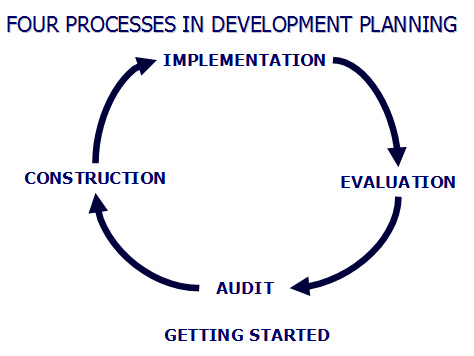what should an action plan include (undergraduate)?
the action plan is prepared by the faculty board in response to the report from the faculty/program review panel. within 30 working days of receipt of the final faculty/program review panel’s report, the faculty board produces the action plan to address points raised and recommendations made in the faculty/program review panel’s report. the action plan is sent by the dean to the faculty/program review panel and to the learning and teaching committee, and the learning and teaching committee monitors its implementation and effects in a time scale that it (the learning and teaching committee) determines.
an action plan address questions such as:
- where are we now?
- where do we want to be?
- how will we get there?
- how will we know when we have got there?
- how will we know if we have been successful?
put into greater detail it raises questions such as:
- where are we now?
- what is the staff capability/capacity to move ahead?
- which existing staff have the required expertise?
- what are the specific goals and targets?
- what is to be done (clear, specific, concrete action/activities)?
- who is to do it (responsibilities)?
- when it is to be done by?
- how progress will be monitored (by whom, when, how)?
- how progress will be evaluated (by whom, when, how)?
- what are the success criteria (with quantitative targets against which to judge progress)?
- what timescales are there for different stages of implementation?
- what resources are required?
the action plan comprises:
- a series of ‘smart’ objectives to address the areas of need identified in the faculty review report, e.g.:
- specific/significant/short-term
- measurable/motivating/manageable
- achievable/agreed/aligned/advantageous
- relevant/realistic/result-oriented/resourced
- time-framed; time-bound/timely/tangible
- intended outcomes and success criteria;
- a detail of what is to be addressed (the contents and priorities);
- how the objectives and intended outcomes will be met;
- defining tasks, targets and responsible individuals, resource allocation and costings, and time frames/dates for completion;
- success criteria and evidence;
- monitoring progress;
- producing the public version of the plan in summary form.
- targets, tasks and success criteria to check progress (monitoring) and to evaluate/check success
- initial tasks and checks for readiness
- tasks and routes to the achievement of targets, and means to monitor and check progress;
- targets and intended destinations, and success criteria to check when and how well these have been achieved/reached.
a good action plan:
- addresses all the key issues;
- is concise and clearly written;
- identifies priorities, specific targets and outcomes;
- is clearly focused on classroom improvement;
- lists manageable steps towards raising standards of achievement;
- includes reference to monitoring and evaluation of intended outcomes and student achievement;
- provides indicators and criteria to recognize improvement;
- identifies and quantifies resources;
- is drawn up consultatively.
the action plan can be set out following these headings, for each item:
(a) recommendation
(b) response
(c) objectives of the action
(d) action proposed
(e) responsibility
(f) time frame
(g) progress indicators
(h) expected outcome
(i) success criteria and indicators
an action plan works when:
- leaders have a clear oversight of its implementation;
- everyone knows what they are expected to do;
- strategies are implemented to address under-achievement, raise expectations, and improve the ethos and standards of education;
- resources are available;
- mechanisms are used for monitoring the implementation and progress of plan;
- mechanisms are in place for evaluating the effectiveness of the action.
steps in action planning include:
- select the issue and decide whom to involve;
- review evidence of existing performance;
- make a self-assessment of strengths and weaknesses;
- describe the ideal future state of affairs;
- state the objectives concisely and recognizably;
- select key features of the ‘ideal future state’ for use as indicators and evaluation headings;
- generate a list of options for action to be taken to lead to the objective;
- select a limited, related set of these actions;
- cost the actions proposed, show plans for acquiring or allocating further resources;
- define tasks, targets and responsible individuals, resource allocation and dates for completion;
- complete a project planning chart to show how different tasks are related;
- choose an evaluator and agree stages and audiences for reports on progress;
- produce the public version of the plan in summary form.
processes in development planning can be set out thus (hargreaves, d. and hopkins d. (1991) the empowered school. london: cassell):

the process of development planning can be set out thus:


download a pdf of this web page (![]() pdf)
pdf)
